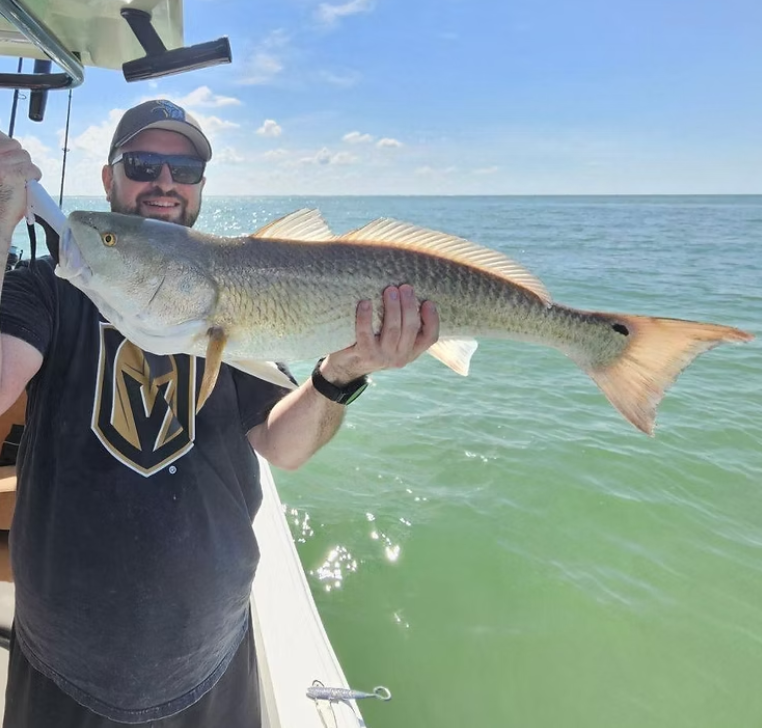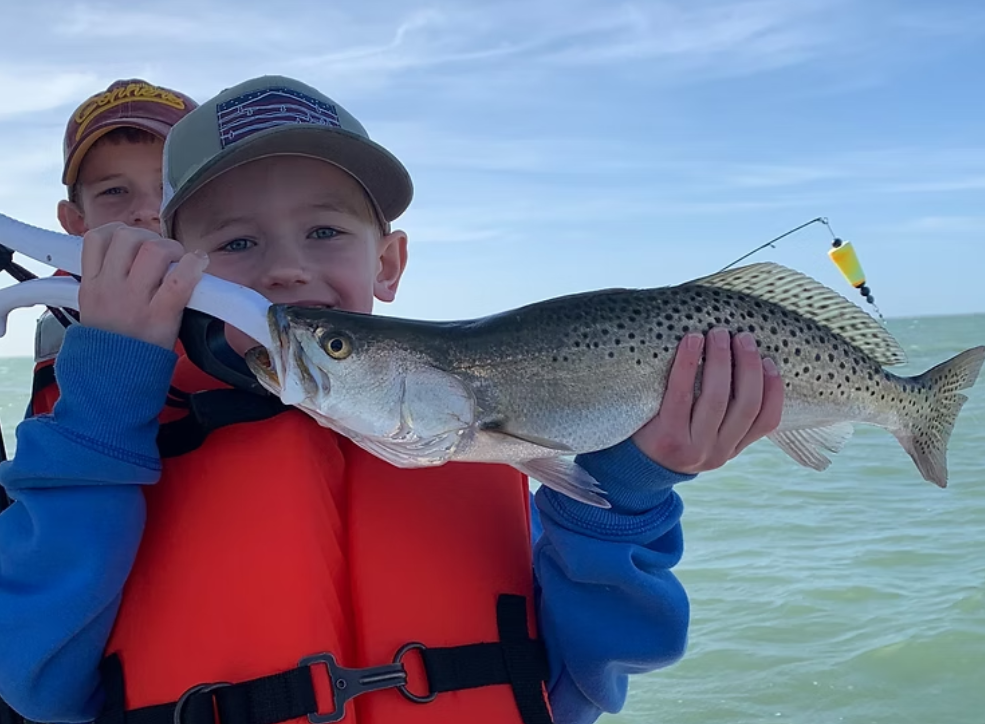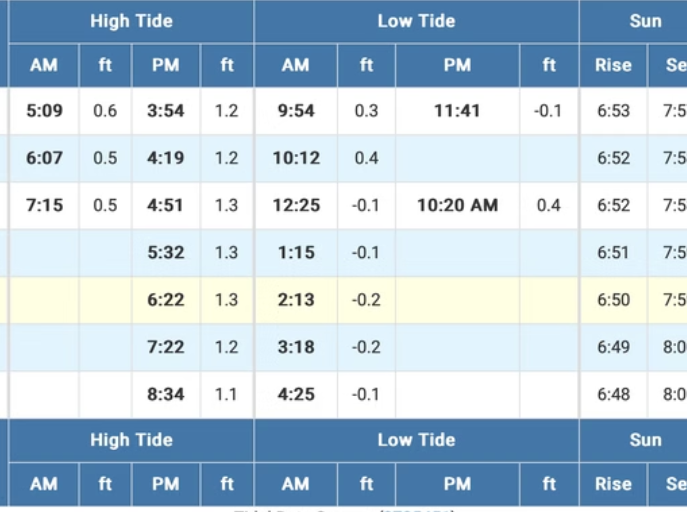Hooked on Cape Coral: Your Guide to Catching Spotted Seatrout
Hooked on Cape Coral: Your Guide to Catching Spotted Seatrout
Cape Coral, Florida, with its intricate network of canals, proximity to the Gulf of Mexico, and abundant estuaries, is a haven for anglers. Among the many prized catches in these waters, the spotted seatrout ( Cynoscion nebulosus), often called speckled trout, stands out as a popular target. These beautiful fish are not only fun to catch but also make for a delicious meal. If you're looking to hook into some "specks" in the Cape Coral area, you've come to the right place!
Why Spotted Seatrout Love Cape Coral
Spotted seatrout thrive in the diverse habitats that Cape Coral and its surrounding areas offer:
* Mangrove Shorelines: The numerous mangrove islands and edges provide excellent cover for seatrout to ambush prey and escape predators.
* Grass Flats: Expansive underwater seagrass beds are crucial feeding grounds, teeming with shrimp, crabs, and small baitfish that seatrout love.
* Oyster Bars: These hard-bottom structures attract a variety of marine life and offer another prime feeding location for trout.
* Canals: Cape Coral's extensive canal system, especially those with access to natural saltwater, can hold good numbers of seatrout, particularly around docks and seawalls.
* Tidal Creeks and Passes: Areas where smaller creeks empty into larger bodies of water or where there's significant tidal flow concentrate baitfish, making them hotspots for trout.
Tips and Tricks for Landing More Trout
Ready to get your line wet? Here are some essential tips to increase your chances of success when targeting spotted seatrout in Cape Coral:
* Timing is Key:
* Tides: Pay close attention to tidal movements. Seatrout are often more active during moving tides (both incoming and outgoing) as baitfish are stirred up.
* Time of Day: Early mornings and late afternoons, especially during warmer months, can be very productive as the water temperatures are cooler, and the fish are actively feeding.
* Season: While seatrout can be caught year-round in Florida, the spring and fall often see increased activity due to spawning periods and favorable water temperatures. Winter can also be good, especially on warmer days.
* Location, Location, Location:
* Look for Structure: Focus your efforts around the natural and artificial structures mentioned earlier: mangroves, grass flats, oyster bars, docks, and creek mouths.
* Potholes in Grass Flats: Sandy depressions within seagrass beds often serve as ambush points for seatrout.
* Edges and Drop-offs: The transition zones between different habitat types or changes in water depth can concentrate fish.
* Bait and Lures:
* Live Shrimp: This is arguably the most effective bait for spotted seatrout. Rig it under a popping cork or free-lined with a small weight.
* Live Baitfish: Small pinfish, mullet, or menhaden can entice larger "gator" trout.
* Soft Plastics: A variety of soft plastic lures mimicking shrimp, baitfish, or worms can be highly effective. Popular choices include jerkbaits, paddle tails, and scented options. Rig them on jig heads of appropriate weight for the water depth and current.
* Topwater Lures: For an exciting visual bite, try using topwater plugs early in the morning or late in the evening over shallow grass flats.
* Suspending Twitch Baits: These lures mimic injured baitfish and can be irresistible to seatrout when twitched erratically.
* Presentation Matters:
* Match the Hatch: Try to use lures that resemble the size and color of the prevalent baitfish in the area.
* Vary Your Retrieve: Experiment with different retrieve speeds and actions until you find what the fish prefer on a given day. This could include slow, steady retrieves, erratic twitches, or pauses.
* Use Light Tackle: Seatrout are not typically line-breakers, so lighter spinning tackle (7-7.5 foot medium-action rod with a 2500-3000 size reel spooled with 10-15 lb braid and a 15-25 lb fluorocarbon leader) allows for longer casts and better sensitivity.
* Stealth is Your Friend: Seatrout can be easily spooked in shallow water. Minimize noise and sudden movements. If fishing from a boat, try to maintain a good distance from your target areas. Wade fishing can be a great way to get closer to the fish.
Popular Fishing Spots in Cape Coral
While seatrout can be found throughout the inshore waters around Cape Coral, here are a few noteworthy areas:
* Matlacha Pass Aquatic Preserve: This area is renowned for its healthy grass flats and mangrove shorelines, making it a prime seatrout habitat.
* Pine Island Sound: Accessible by boat, this expansive sound offers diverse fishing opportunities, including excellent seatrout fishing.
* Cape Coral Canals (especially those near the Caloosahatchee River): Docks and seawalls in these areas can hold good numbers of trout.
* Four Freedoms Park: Located off Cape Coral Parkway, the beach area here offers access to the Bimini Basin, where seatrout can be caught.
Regulations and Conservation
Always be aware of the current Florida Fish and Wildlife Conservation Commission (FWC) regulations regarding size limits, bag limits, and any seasonal closures for spotted seatrout in the Southwest Florida region. Responsible angling practices, such as catch and release when appropriate and proper handling of fish, help ensure the sustainability of this valuable resource for future generations.
So, grab your gear, soak up the Florida sunshine, and get ready for some exciting spotted seatrout action in the beautiful waters of Cape Coral! Happy fishing!



